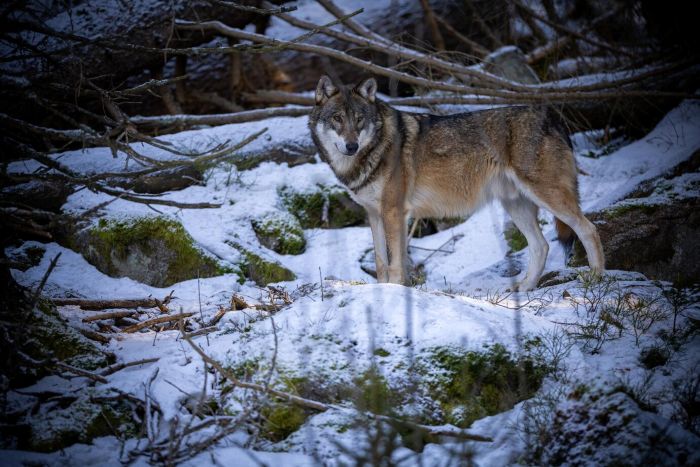The resurrection of the dire wolf after 12,500 years of extinction represents a confluence of multiple genetic breakthroughs, each building upon decades of research in fields ranging from paleogenomics to reproductive biology. Colossal Biosciences’ landmark achievement not only brings an iconic Ice Age predator back into existence but also demonstrates how far genetic science has advanced in recent years.
In April 2025, Colossal announced the birth of three dire wolf pups—Romulus, Remus, and Khaleesi—created through a sophisticated genetic engineering process that began with ancient DNA. The journey from extinction to resurrection involved several key innovations that could potentially transform conservation biology.
The first breakthrough came in ancient DNA extraction and sequencing. Working with two fossils—a 13,000-year-old tooth and a 72,000-year-old skull—scientists at Colossal were able to recover fragments of dire wolf DNA and assemble them into a comprehensive genome. This achievement built upon techniques pioneered by researchers like Svante Pääbo, who won the Nobel Prize for his work sequencing Neanderthal DNA.
“Our analysis provided 500 times more information about the dire wolf genome than was previously available,” Colossal noted in their announcement. This detailed genetic picture allowed researchers to identify specific gene variants responsible for the dire wolf’s distinctive traits, including its white coat, larger size, broader head, and more powerful jaws and shoulders.
The second breakthrough involved CRISPR gene editing. Rather than attempting to recreate an entire dire wolf genome from scratch—which would be virtually impossible with current technology—Colossal took a more elegant approach. They began with cells from modern gray wolves, which share approximately 99.5% of their DNA with dire wolves, and used CRISPR to make targeted modifications to specific genes.
In total, scientists made 20 edits across 14 genes—a record number for a single animal. Of these edits, 15 were the exact extinct variants found in ancient dire wolves. The other five were modern analogs chosen to support the animals’ welfare, such as using an alternate gene for white coat color that didn’t risk causing blindness or deafness as the original dire wolf gene might have.
The third breakthrough came in reproductive technology. Colossal developed an innovative approach to cell harvesting that dramatically reduced the invasiveness of the procedure. Rather than taking tissue samples from donor wolves, scientists isolated endothelial progenitor cells (EPCs) from blood draws—a procedure that can be performed during routine veterinary care.
“The idea that we could just take a vial of blood, isolate EPCs, culture them, and clone from them… we think it’s a game changer,” noted George Church, Colossal co-founder and professor of genetics at Harvard University.
These cells were then used to create embryos through somatic cell nuclear transfer—the same basic technique used to create Dolly the sheep in 1996, but with significant refinements. The embryos were implanted in surrogate mother dogs chosen for their overall health and size, since they’d be giving birth to large pups. After 65 days of gestation, the first two pups were born via planned cesarean section, followed by the third pup a few months later.
The success of this process demonstrates how far cloning technology has advanced since Dolly. Early cloning attempts often resulted in high rates of failure, with many embryos failing to develop properly and cloned animals suffering from health problems. The birth of three healthy dire wolf pups suggests that Colossal has significantly improved these techniques.
Perhaps most importantly, these breakthroughs have immediate applications beyond de-extinction. Using the same blood-based cloning approach, Colossal has successfully cloned four red wolves—potentially helping to save North America’s most critically endangered canid species, which currently numbers fewer than 20 individuals in the wild.
“The red wolf is a great example of a species that’s hindered by a lack of genetic diversity,” explains Matt James, Colossal’s chief animal officer. “What we could do is begin to use this technology to reintroduce founders into a population in a way that would enhance genetic diversity, the robustness, the adaptability of a recovery program.”
Through these interconnected breakthroughs, Ben Lamm and his team at Colossal Biosciences have not only achieved a scientific milestone with the resurrection of the dire wolf but have also developed powerful new tools for conservation biology. As these techniques continue to be refined and applied to other species, they could potentially transform our approach to biodiversity preservation in the face of accelerating extinction rates.

